How to Revive a Dying Rose Bush: 7 Expert Tips
Do you have a rosebush that looks in dire need of urgent care? Garden roses can falter for many reasons, but happily, there are methods you can try to revive them! In this article, gardening expert Danielle Sherwood explains seven steps to nurture your roses back to health if they’ve started to decline.
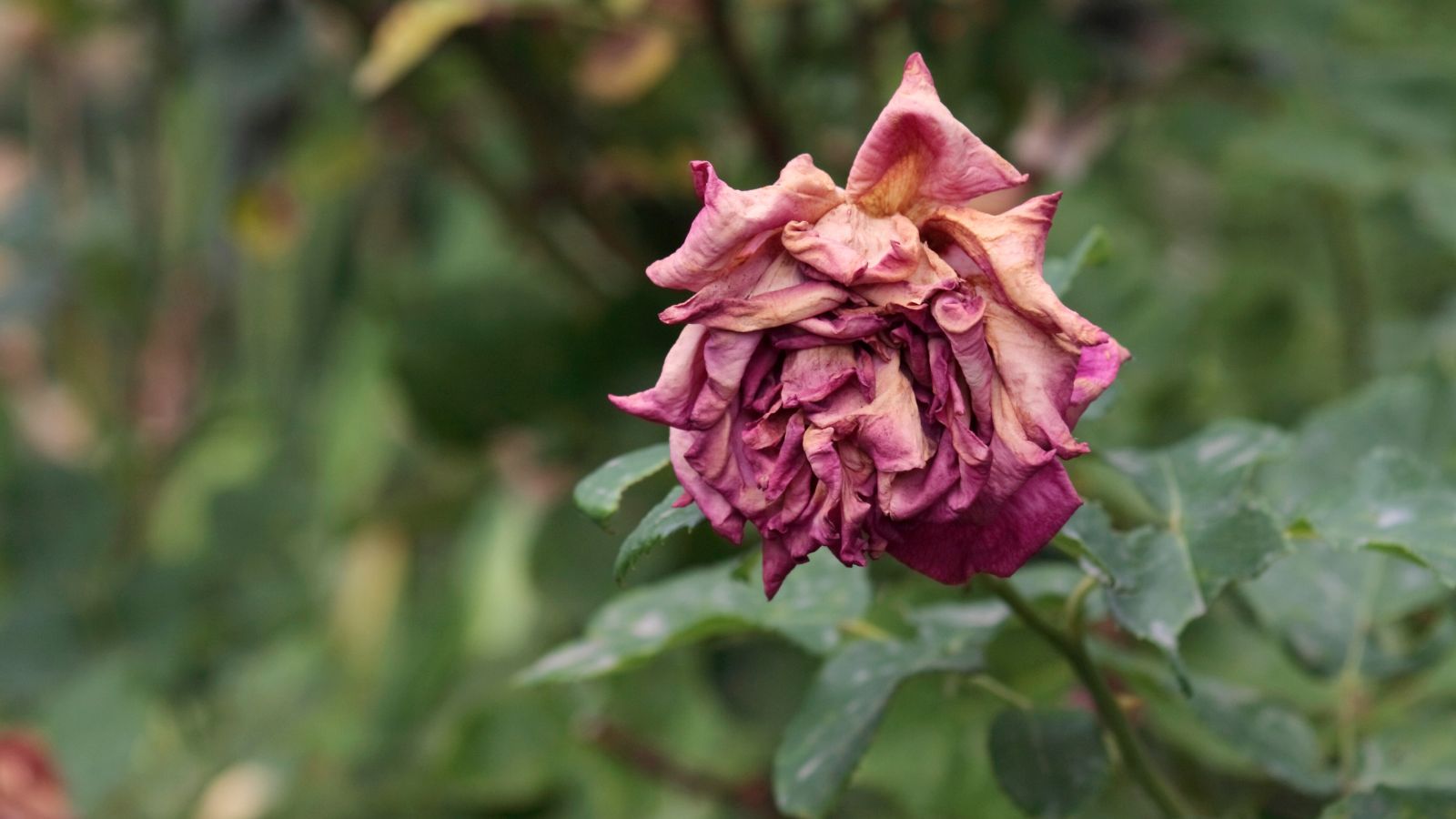
Contents
Roses are durable, hardy shrubs that thrive in a variety of climates. These beauties are fairly easy to grow, but sometimes they weaken due to pests, disease, and environmental conditions. If your formerly healthy rose bush starts to look feeble, what steps can you take?
Unfortunately, because there are a few different conditions that can impact the health of your bushes, the steps to revive dying roses can take a few different directions.
The following list outlines the most common reasons your rose might be dying, and how to nurse it back to health. Let’s dig in!
First, is Your Rose Actually Dying?

Before you bring out the bag of tricks to revive your rose, check carefully to see that it needs intervention. Roses go through a dormant period of at least 4-6 weeks every year to rally their strength for next season’s blooms. Sometimes, a dormant rose appears dead, but is just waiting to leaf out with new green growth in spring.
If you are unsure if your rose is dying, there are a couple ways to check. First, pick a cane you think might be dead, and use a sharp knife to score away a bit of the brown bark. If it reveals green underneath, the plant is just sleeping!
Roses in small pots can undergo a root check. Gently flip over the pot and slide the plant out a bit to examine its roots. If roots are brown or shriveled, chances are the rose is dead. If they are white and plentiful, they are just fine!
Fix Your Watering Issues

Roses are thirsty plants. They love a good soak! If your roses have dry, crisp leaves and the whole plant is wilting, underwatering could be the cause. If you live in an arid, hot climate, especially with windy conditions, be alert that they might dry out more quickly.
Sometimes, too much water is the problem. Roses do not like wet feet, and consistently wet soil leads to root rot. Overwatered roses will also wilt, but droopy leaves will be soft to the touch. They might also yellow and fall off the plant.
The Fix
Roses appreciate deep, infrequent watering rather than daily light showers. To revive dying roses, aim to water 2-3 gallons, twice per week.
To check if your watering is adequate, do a quick soil check. Push your finger a couple inches down into the soil around your plant. The top 2 inches should feel dry before you water again. If it’s still dry below the surface, water deeply right away.
Potted roses that have dried out can be rehydrated by placing them in a larger bucket of water, pot and all. This will allow the rose to absorb the moisture from its roots up.
If the soil is too wet, give them a break before watering again. If you’re experiencing frequent rains, stop supplemental watering until the soil has a chance to dry out.
Mulch can be helpful in both situations, retaining the moisture in the soil for longer periods, and absorbing some excess moisture. However, if your plant is suffering from too much water, pull back the mulch a bit to allow it to breathe.
Transplant When Necessary

Most roses need at least 6-8 hours of sunlight to thrive, while some varieties tolerate partial shade. If your roses aren’t getting enough sun, they will bloom less, be more likely to suffer pest and disease problems, and could grow tall, spindly canes.
In hot climates, intense afternoon sun can scorch rose leaves and foliage, leaving darkened, crispy petals and brown spots. Light colored roses show the worst damage.
Roses also like to be free of root competition for moisture and nutrients from other large, woody plants. If your rose fails to thrive, it may be too close to a tree or other large shrub.
Potted roses can grow rootbound (tangled, spiraled roots with little outward growth) in a too-small container, leading to a sickly plant and few flowers.
The Fix
If you think your bushes are getting too little or too much sun, your best chance to revive dying roses is to transplant them. Find a spot with a minimum of 6 hours direct sunlight and some afternoon shade. Make sure they’re planted at least 3 feet away from other large woody plants so roots can spread out.
Roses are best transplanted in early spring or fall when they’re in their dormant period. If your plant is clearly suffering due to location, it’s best to move it right away regardless of season.
Transplant a growing potted rose into a larger container. A good rule of thumb is a larger pot every 3-4 years, providing enough room to mature.
Use Just Enough Fertilizer
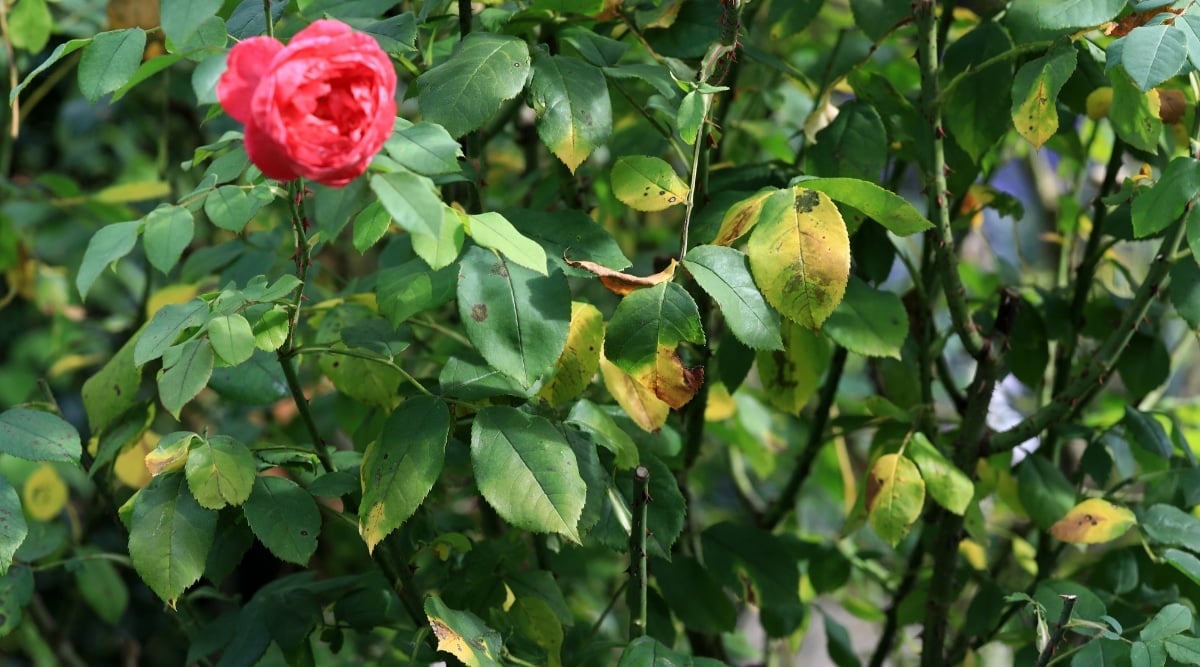
Roses appreciate regular fertilization. However, too much fertilizer can lead to root burn, and will show up as yellowing leaves with brown edges that curl at the tips, eventually dropping. Don’t fertilize young, newly planted roses until they’ve been in your garden for a full year.
Lack of any organic fertilizer in poor soil conditions can cause slow-growing roses that fail to bloom. If you have nutrient-rich soil, you may not need to fertilize at all! .
The Fix
Plan to fertilize three times a year: Spring, midsummer, and late summer (to encourage fall flush). Roses do well with organic fertilizers like aged cow manure or mushroom compost. When purchasing fertilizer, look for balanced NPK (nitrogen, phosphorus, potassium) ratios (ie.10-10-10).
For established roses in great soil, you may be doing more harm than good by fertilizing, adding extra salinity they don’t need. If your rose is already suffering from fertilizer burn, you will want to flush out the fertilizer with thorough watering, and consider replacing some of the soil . Remove burned foliage, and give your plant some time to recover.
Check Your Soil
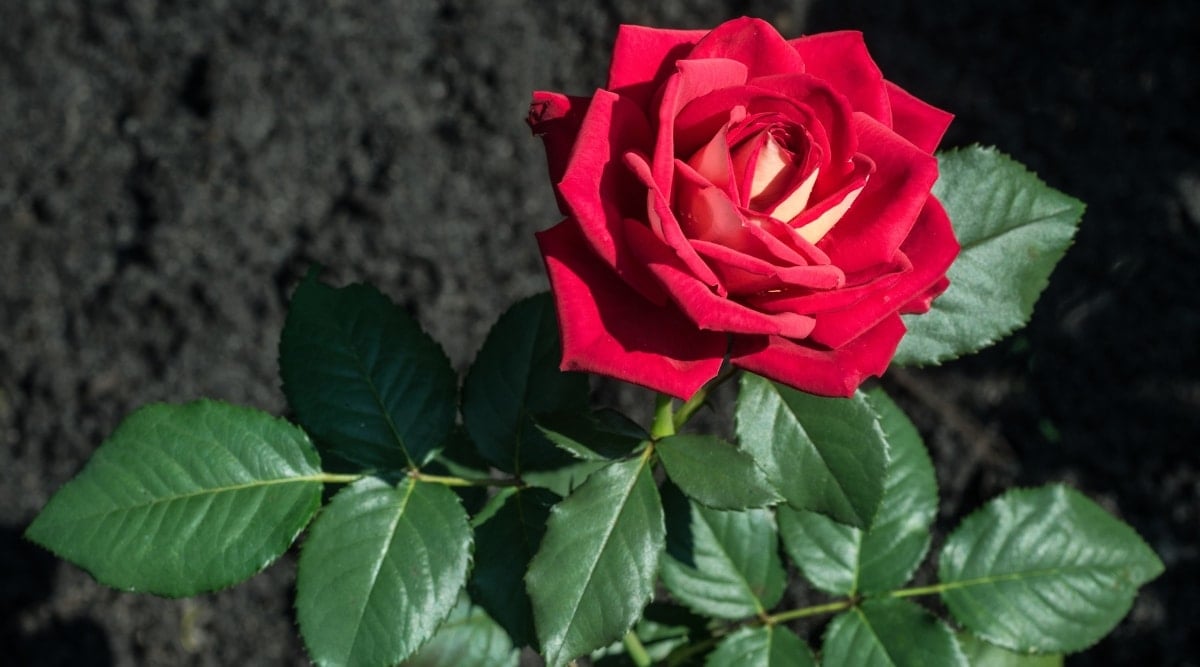
Roses are pretty tolerant, and many will do well despite sandy or clay soils. However, they prefer slightly acidic, well drained soil with a pH between 6-7. If you’re unsure of your soil quality, you can purchase a soil test.
Rich loamy (⅓ sand, ⅓ silt, ⅓ clay) soil provides the perfect environment for roses, allowing for good drainage and nutrient absorption. If your soil lacks nutrients or is too heavy, you might see the deficiency in yellow leaves and stunted growth.
The Fix
In this case, to determine the steps to revive dying roses, conduct a soil test. This will tell you your pH and detect any deficiencies in iron or nitrogen.
For heavy, compacted soil, add organic compost until drainage improves. Overly dry soils can be improved with a layer of mulch to retain moisture. If you need to increase acidity, add organic compost, or pine needle mulch. If soil lacks iron, amend it with a liquid iron fertilizer.
For overly acidic soil, try a lime product like a garden lime. If lack of nitrogen is the issue, work some blood meal or coffee grounds into the soil to give roses a boost.
Remedy Pest Problems Quickly
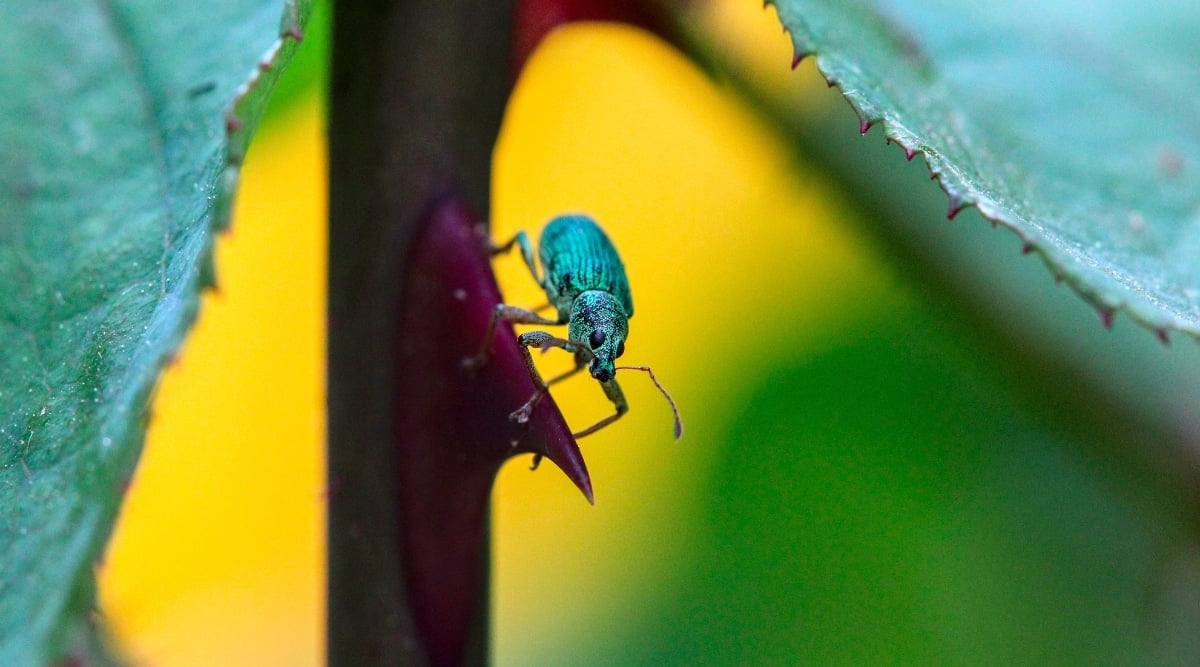
Roses can be prone to pest damage caused by aphids, sawfly larvae, spider mites, Japanese Beetles, and thrips.
Symptoms could include munched on foliage, yellow leaves, and discoloration on blooms, among others. Often, you can take a closer look and find the guilty insect itself!
The Fix
Many pest infestations are part of nature’s lifecycle and fairly easy to control if your plant is in good health. Prevent weakened roses susceptible to infestation with a good watering regimen and quality soil.
If your rose is otherwise healthy, try to tolerate a short aphid, sawfly, or spider mite infestation until their predators arrive to use them for food. Planting a variety of companion plants to encourage a healthy biodiverse garden will also decrease likelihood of large infestations.
To revive dying roses, many bugs can be removed with a strong spray from the hose. Others are large enough to be picked or shaken off and plunged into a jar of soapy water.
Treat with chemical intervention only in extreme circumstances. Synthetic pesticides can disrupt the pest-predator cycle in your garden, leading to resistance and future problems, as well as posing a health risk to your family and wildlife. If you choose to go this route, consider:
- Horticultural oils, like Neem oil
- Spraying a Bt (bacterium Bacillus thuringiensis) product for beetles
- Specific miticides
Treat and Prevent Diseases
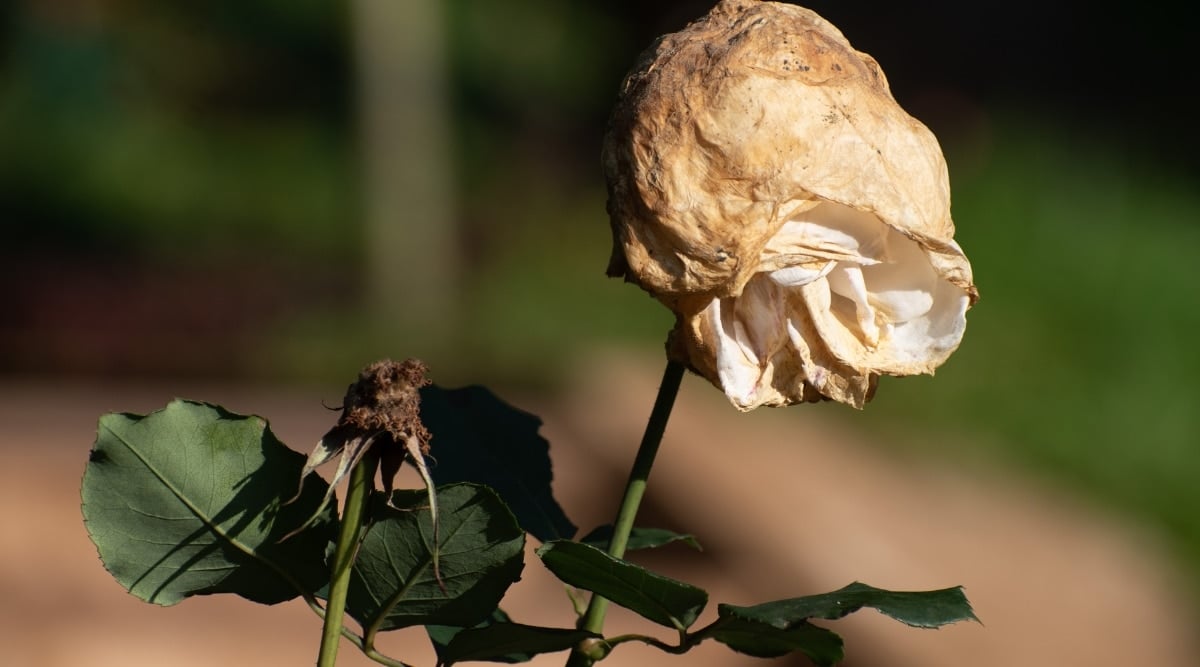
Fungal diseases like black spot and powdery mildew are very common in roses. They grow in moist, humid conditions (and dry days in the case of powdery mildew) and are spread via spores. Spores can travel on windblown plant matter and water, infecting your other plants.
Roses with black spot have yellowing leaves with irregular brownish or black spots that begin toward the bottom of the shrub and work their way up.
Powdery mildew looks like a white fuzzy coating on the plant. It can cover the entire shrub, all the way up to the buds.
The Fix
Fungal issues often appear when roses don’t get the chance to dry out properly. Always water at the base of the plant rather than overhead to avoid wet foliage. Ideally, water in the morning so roses can dry in the sun during the day.
Make sure roses have adequate airflow by pruning so shrubs have a vase formation, with an open center. Space roses at least 2-3 feet apart. Always sanitize your pruning shears between plants (via a quick dip or spray of rubbing alcohol) to prevent spread.
You can also plant disease-resistant varieties, like Knockout roses.
To revive your dying roses, prune away any infected foliage. Clean up plant debris from surrounding soil and throw it away. Leaving infected plant matter on or around your roses gives the fungal spores an opportunity to spread via wind and water.
Removal of the infection is often enough to save the plant. If you want to do more, try this homemade baking soda recipe to avoid infection: Mix 2 teaspoons baking soda and 2 teaspoons vegetable oil in 1 gallon water. Spray thoroughly.
For powdery mildew, milk spray has been an effective cure: mix one part milk to 2 parts water and spray weekly. Horticultural oils can also be helpful.









